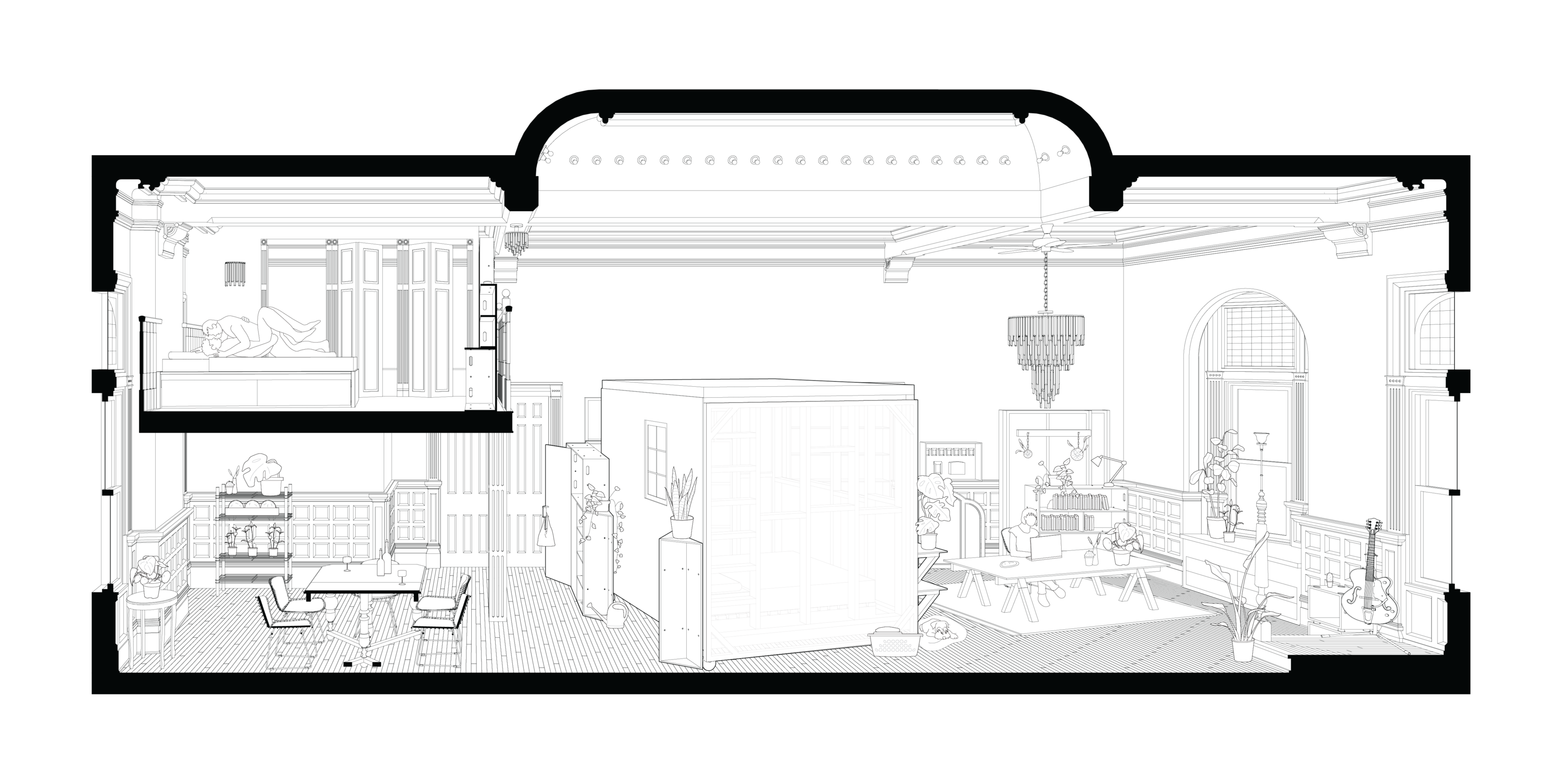Closet Architecture: Reflections on the queer domestic interior

Abstract:
In
the
midst
of
a
cultural
moment
that
has
seen
a
moratorium
placed
on
public
space,
and
a
growing
sense
of
contraction
and
isolationism
on
a
global
scale,
our
attention
shifts
to
the
private
domestic
realm.
We
zoom
in,
past
grand
chambers
designed
to
impress
non-existent
visitors,
and
suites
structured
to
create
the
illusion
of
order
in
our
otherwise
chaotic
lives,
until
we
reach
that
room
most
synonymous
with
secrecy,
compartmentalization,
and
shame:
the
closet.
Closet
Architecture
traces
the
architectural,
linguistic,
and
cultural
evolution
of
the
closet
through
time,
in
order
to
find
new
insights
into
this
space
of
identity,
interiority,
and
isolation.
While
the
closet
has
become
the
go-to
architectural
metaphor
for
queer
shame,
it
has
historically
operated
as
a
space
of
power,
knowledge,
spirituality,
and
intimacy.
How
might
a
better
understanding
of
closets
in
a
historical
context
lend
us
a
greater
sense
of
agency
as
queer
people?
How
can
spatial
practice
help
us
take
back
the
closet?
Closet
Architecture
employs
an
auto-ethnographic
approach
to
research,
centering
my
own
lived
experience
as
a
queer
designer
to
build
broader
cultural
reflections
on
solitude
and
privilege,
exclusion
and
retreat,
and
shame
and
empowerment
through
this
most
paradigmatic
architectural
type.
The examining committee is as follows:
Supervisor:
Robert
Jan
Van
Pelt
Committee
member: Anne
Bordeleau
Internal-external
reader:
Fiona
Lim
Tung
External:
Emre
Yurga
The
defence
examination
will
take
place:
Wednesday,
June 8,
2022,
2:00 p.m.
Please
contact the
grad
office for
the
Teams
link.
The
committee
has
been
approved
as
authorized
by
the
Graduate
Studies
Committee.
A
copy
of
the
thesis
is
available
for
perusal
in
ARC
2106A.